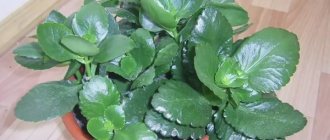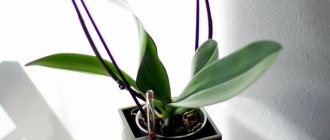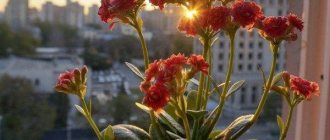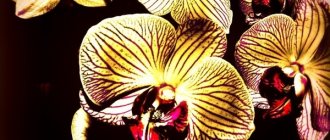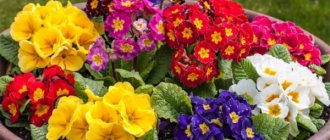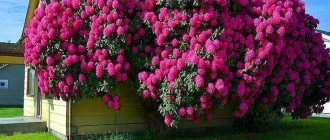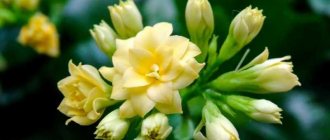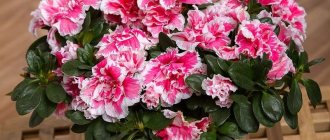Kalanchoe is a popular flower among indoor plant lovers. Many people like it not only because of its ease of care, but also because of its flowering, which in some varieties is truly mesmerizing.
The plant quickly adapts to home conditions after purchase, and with proper agricultural technology and maintenance it is able to lay new buds for a long time.
How to make Kalanchoe bloom?
At the same time, stress allows you to spur the ejection of a bud, but only if it does not last long and is controlled from the outside. Experts know what to do if a previously flowering Kalanchoe no longer blooms and suddenly loses all its ovaries. The sequence of actions should be as follows:
- Increasing the frequency of watering. The soil under the succulent should be constantly moist for 2-3 days.
- Double dose of fertilizer. Spontaneous feeding outside the plan will force the plant to grow “dormant” ovaries.
- Loosening the soil at the roots. Aeration of the root system enhances the immunity of the buds.
Kalanchoe Blossfeld does not bloom - what to do?
There are at least 130 varieties of the Blossfeld variety: each of them has small double flowers in a wide variety of shades - pink, orange, red and yellow. Kalanchoe Blossfeld does not bloom if it grows in a dark place. It also does not like direct light, but responds with a large number of ovaries to bright light. The correctness of care that stimulates flowering can be determined by two criteria:
- The presence of a red border on the leaves of the plant. When Kalanchoe does not bloom, ovaries do not appear if the leaves have a uniform green color. The red “stripe” signals that the plant is receiving the required amount of water and nutrients.
- No fungal diseases. If brown spots appear on the leaves, they are removed and the cut areas are treated with a fungicide.
Kalanchoe Kalandiva does not bloom
The Kalandiva variety is considered the most adapted to living in an apartment or house. Its bright double flowers are collected in large inflorescences, so if one inflorescence dies, the petals of the neighboring ones also dry out. It has one peculiarity: while other succulents lose their ability to bear flowers due to moisture getting on the leaves, Kalandiva, even considering that it is a subspecies of Kalanchoe, does not bloom unless it is sprayed. It does not tolerate dry air very well, so you need to spray the plant with water at room temperature at least 2-3 times a day.
How to prune Kalanchoe to bloom?
Pruning is recommended for any type of this ornamental plant as a measure to stimulate flowering. The process involves removing excess leaves or diseased peduncles to prevent the development of diseases and give a neat shape.
Since as the stem develops, the upper shoots tend to thin out and become sterile, it is important to know how to properly pinch a Kalanchoe to bloom. These two processes (pinching and cutting) are similar to each other, so they can be combined into one:
- First you need to select the weakest tops of the plant, which have not been covered with flowers for a long time.
- Using scissors or fingers, a small part of the stem is removed with the expectation that the remaining wound will be small.
- After pinching, the edges of the stems are sprinkled with ash or charcoal to prevent dying.
Kalanchoe flower - how to care for it to bloom?
In order for ovaries to appear on a houseplant, its care regimen must be radically revised. You don’t need to think about how to make Kalanchoe bloom at home—you just need to eliminate factors that impede this process. These include:
- Excess sunlight. Constant stay on the windowsill, located on the sunny side of the home, causes the plant to grow in height, spending all the juices on this process.
- Avoiding overwatering. The leaves of the bush are able to accumulate moisture and consume it gradually, so a lack of water is not as destructive as its excess. In summer, the procedure must be repeated once a week, in winter - twice.
- Fertilizer with a special complex for succulents. If a Kalanchoe does not bloom, no matter what its owner tries to do, this may mean that it needs a mineral complex with potassium, sodium and manganese in its composition.
Reproduction methods
Propagation of Kalanchoe by cuttings
Both a leaf plate and a shoot segment can be used as a cutting. Rooting them is very easy. For example, in the first weeks of summer, tear off a leaf from the parent bush and plant it in a fertile soil mixture. Then it is covered with a jar and periodically moistened with a sprayer. After a little time, roots form on the leaf.
Growing from seeds
The crop is also quite easy to propagate by seeds. They are sown in the last winter or first spring weeks. To do this, take a container that is filled with deciduous soil. Then you need to evenly distribute the seeds on its surface, which are then pressed into the substrate with your finger, and there is no need to fill them with soil mixture on top. The container must be covered with glass and a paper sheet; crops need regular ventilation in the morning and evening. They need to be provided with the correct temperature regime from 16 to 20 degrees, as well as timely watering with lukewarm water, while making sure that it does not dry out completely. After the shoots appear, the cover must be removed from the container. When they are 20–30 days old, they should be put into a larger container. The plants are replanted again after their third or fourth true leaf blade has formed. Do not forget to make a good drainage layer at the bottom of the pots, and for planting seedlings use a substrate consisting of turf soil, peat and sand (2: 4: 1). After the transplanted seedlings have taken root well, they should be pinched at the top, thanks to which the bush will be more lush and branched. The next transplant is carried out only after the plant becomes cramped in the pot. This time they use a soil mixture that includes humus, compost, sand and deciduous soil. The young bush will bloom for the first time next year.
How to choose a good Kalanchoe flower in a store
To select a healthy and viable plant in the store, you must follow these rules.
Stem
During an external inspection, you need to check the safety of the stem and its elasticity. Determine how firmly the plant is rooted in the substrate. If the plant stem “dangles” in the container, there is a fairly high risk of hidden mechanical damage to the root system during transportation.
Important! You should choose a plant with an even distribution of foliage on the stem, without bald spots. The presence of a bare stem indicates injury to the plant.
Leaf color
In terms of color, the leaves and stem of the plant should have a uniform, uniform color, without white bloom, brown spots and yellowed edges of the leaf blades. It is necessary to especially carefully check the condition of the lower leaves; they must be healthy, not wrinkled, or darkened from excess moisture.
Inflorescences
In flowering species, it is necessary to carefully examine the inflorescences. They should contain as many closed buds and barely blooming flowers as possible. The presence of faded inflorescences and, especially, drying panicles in the selected specimen indicates that the plant has been blooming for a long time, and soon it needs to be prepared for a dormant period.
Substrate
It is very important to check the condition of the earthen substrate in the transport container. The earthen ball should not be too wet, and in the lower part near the holes for draining the liquid it should not be sour
Excessive humidity and mass processing of plants in chain supermarkets can harm the plant and stimulate the process of rotting of the root system, which can lead to subsequent withering of the plant.
It is better to choose plants with a dry earthen lump. Excessive waterlogging is more likely to kill Kalanchoe than short drying. Thanks to its succulent properties and ability to accumulate liquid in the stem and leaves, Kalanchoe is able to withstand short-term drought without serious consequences.
Important! When purchasing, you need to choose the right Kalanchoe. Home care after purchase involves observing an adaptation period and further transplantation
Kalanchoe is a short-day plant. To stimulate the budding process, a short day lasting less than 8 hours is artificially created. To do this, cover the bush with a cap that does not allow light to pass through, or put the pot in a closet.
Folk signs
It is believed that a blooming Kalanchoe attracts good luck and prosperity to the home. The “babies” along the edges of the leaves resemble coins, and the abundance of flowers is associated with wealth.
In addition, it is believed that Kalanchoe makes the atmosphere in the house healthier. It “establishes” relationships between household members, and attracts couples to single people. The better the pet feels, the greater luck awaits its owner.
Care
Location and lighting
Loves bright rooms with diffused light. In the summer, it should be placed on windows located towards the west and east. Direct sunlight should be avoided to avoid leaf burns. Loves fresh air, but drafts should be avoided. In winter and during the flowering period, you can use phytolamps if daylight is not enough (the plant begins to stretch and the inflorescences become smaller). The complete absence of light also negatively affects indoor plants.
Temperature
The Kalanchoe flower can easily withstand high temperatures in summer, up to thirty degrees or more. In winter, you need to maintain a cool temperature of +16-18 degrees (not lower than +10), this helps the rapid formation of flower buds. When it is cool, the flower becomes comfortable to bloom. If the room is too hot, this process is suspended.
Air humidity
Air humidity does not play a key role in the life of a plant. Kalanchoe thrives in both dry air and high humidity. There is no need to spray the plant, but sometimes you can wipe the leaves with a damp cloth or sponge to remove dust. After this procedure, it is necessary to repeat wiping with a dry cloth.
Watering
Moderate, with drying out of the top layer of soil. In summer - about 1-2 times a week (but do not forget to check the soil). In winter, watering should be done a minimum number of times. Kalanchoe can tolerate an insufficient amount of water, but an excess will destroy it, because... may lead to root rot. If the soil dries out greatly, the plant may shed its leaves.
The soil
For such an unpretentious plant as Kalanchoe, you can choose any soil for succulents. It can usually be found in many flower shops. A skilled gardener can create such soil himself. To do this, you need to mix peat, turf and leaf soil in equal quantities. You can add charcoal. It is necessary to put drainage at the bottom of the flower pot.
Fertilizer
It is enough to fertilize non-flowering species once a month during the growth period (spring-summer). They bloom once every three weeks in spring and summer, and also in autumn (for the formation of flower buds). In cold weather, you should absolutely not fertilize the plant. Even if it withers, you cannot fertilize it in winter. It is recommended to use store-bought fertilizers for succulents or complex fertilizers (mineral and organic) with a low nitrogen content.
Transfer
It is necessary to replant a houseplant if the flower pot in which the Kalanchoe is currently located becomes too small for it. Replanting may also be required when the plant’s soil begins to rot after prolonged watering.
Young Kalanchoe requires annual replanting due to the rapid growth of roots. It is recommended to do this when the spring period ends. To replant, you need to take the plant out of the flower pot along with a small amount of soil, place it in another and water it.
Then the plant begins to slowly adapt to its new “place of residence.” In the new pot, it is necessary to maintain equal proportions of new soil and existing soil. Most often, Kalanchoe goes through an adaptation period of seven days. After which you can feed the flower. When choosing a new flower pot, you should choose wide and deep shapes. .
Kalanchoe - home care
Lighting
For normal growth, any place in the house that receives even a little sunlight is suitable. The plant grows well in partial shade or in diffuse sunlight.
When exposed to direct sunlight, the color of the leaves along the edges will change, they become reddish.
The ideal place in the house would be an east or west window
, with not very intense lighting. Blooming Kalanchoe prefers an eastern or south-eastern window.
During Kalanchoe flowering in spring and autumn, additional lighting will be needed.
Insufficient light causes plants to stretch out
, the upper leaves turn pale and the lower ones die.
Temperature
The plant tolerates temperature changes calmly. Therefore, starting from 10 degrees, it can be taken out into the fresh air. During the summer-autumn period, the plant can be left on the balcony.
The plant tolerates heat in the summer months well, but it is necessary to increase the frequency of watering.
The optimal temperature is considered to be: 23-25 degrees in summer, 12-16 degrees in winter
.
Watering
Kalanchoe accumulates moisture in its leaves and withstands drought or, for example, your absence. Plants are afraid of stagnant water.
Watering must be done abundantly to wet the entire lump of earth, but the remaining moisture must be drained.
Decide for yourself the correct frequency of watering; the earthen ball should dry out between waterings.
More often, watering is carried out in the summer heat; in winter, the interval between waterings is 10-14 days.
If you flood the plants, the roots will begin to rot, and various rots and fungi will appear.
Humidity
At home, Kalanchoe does not need spraying. It is especially dangerous to spray in winter. If the leaves are covered in dust, the best way to get rid of it is to wipe it with a damp cloth or, alternatively, wash it in the shower.
Trimming
In order for plants to bloom, they must be pruned radically. Trim the flower stalks as low as possible so that the remaining parts do not rot.
All bad looking and old parts of the plant must be removed. Young and strong shoots, after pruning, are suitable for propagation.
In summer, pinch off the tops to form side shoots and protect the plant from growing.
Video - Pinching decorative Kalanchoe
Top dressing
About once a month, Kalanchoe needs to be fed using fertilizers for succulents.
Complex fertilizers are used for flowering Kalanchoe
, otherwise the plant will not bloom.
Attention:
an excess of fertilizers is dangerous for Kalanchoe.
When feeding, it is better to dilute half the dose or a third according to the instructions of the drug used. Do not fertilize in winter.
Reproduction
Kalanchoe is a fast-growing plant and therefore reproduces easily.
For reproduction
Young shoots that remain after pruning or are cut specifically for propagation are suitable.
Shoots are approximately 10-12 cm long. 4-6 lower leaves are removed from them and planted at this depth in a pot with loose, fertile soil.
Roots will appear from the axils of the torn lower leaves in the ground. After planting, compact the soil around the shoot and water along the edges of the pot (so that the shoot in the ground wilts a little, do all other watering as usual, over the entire surface).
There is no need to cover the plant during propagation. Place the pot in a warm place with partial shade.
Transfer
Plants require annual replanting at the end of March
.
Adult plants can be replanted every 3 years
or sprinkled with fertile soil, provided that the roots do not protrude beyond the boundaries of the pot. Transplantation can also be done after flowering.
To replant, you need to select a pot 2-3 cm larger in diameter than the previous one. Carefully remove the flower when replanting so as not to damage the plant.
Pests
Among the pests that can attack Kalanchoe are scale insects, spider mites and mealybugs.
Mealybug
remove with a wet cloth soaked in alcohol.
In the fight against scale insects and ticks
Treatment with insecticides will help.
A good remedy is Fitovera
, it does not harm humans or pets.
Video – KALANCHOE. ALL ABOUT CARE
Origin of Kalanchoe
The described inhabitant of the windowsill is considered a medicinal representative of the flora, often used for nasal congestion and other inflammatory processes. The question of whether flowering Kalanchoe can be used for medicinal purposes is still controversial. But even if it is impossible to get rid of a runny nose with the help of such a plant, it will delight its owners with its flowers.
This type of indoor decoration belongs to the Crassulaceae family, and translated means “plant with thick skin.”
The island of Madagascar is considered the birthplace of the green creature, but its growth can be found almost throughout Asia. The flowering beauty is grown both in greenhouses and in the room. This type of indoor decoration belongs to the Crassulaceae family, and translated means “thick-skinned plant.” Thanks to its thick stems and leaves, it accumulates moisture and goes without watering for a long time. Evaporation is prevented by a thin film covering the leaves and stems. All these features must be taken into account in order to care for a blooming creature.
Let's highlight the basic principles of care:
- Watering mode.
- Requirements for illumination and temperature.
- Transfer.
- Reproduction methods.
- Feeding, pruning.
- Protection from diseases.
Now let’s try to consider each of the mentioned principles in detail.
Video clip on how to grow Kalanchoe at home
Kalanchoe blooming - home care
Kalanchoe
– a bright representative of the Crassulaceae family, can be both decorative (Blossfelda) and medicinal (Degremona).
Blooming Kalanchoe
is unpretentious in care and is distinguished by its rare beauty.
Let's take a closer look at: caring for flowering Kalanchoe at home, replanting, propagation, proper watering and fertilizing for abundant flowering. Caring for Kalanchoe after flowering.
Why does Kalanchoe start to grow upward and stop blooming?
There are several reasons why a plant does not produce flowers. The main ones are:
- Lack of knowledge by the owner of the flower about the technology of growing the plant. After all, in the store the seller said that this potted crop does not require special care.
- There is not enough lighting for flowering. As a result, the shoots begin to stretch; they simply do not have enough strength to begin to form inflorescences.
- Very often, when we come to the store, we see flowering bushes. It seems to us that this culture is constantly blooming. But this impression is deceptive. To get this look, flower suppliers, before sending them to the store, achieve the appearance of buds by ordinary forcing.
- A small plant with a small root system is planted in a transportable pot. The soil in it contains special fertilizers that are valid only for two months. This Kalanchoe is kept for several days in a short daylight hours, usually 10 hours. The bushes begin to lay flower buds.
- When such a plant turns out to be in good home conditions, where normal lighting and temperature are created for it, it continues to bloom, thanks to the nutrients remaining in the pot.
To see a flowering bush again, you need to help the plant, it must gain strength and begin to bloom in good home conditions.
Protection from diseases
Like any other plant, Kalanchoe can be negatively affected by various diseases and pests. This happens rarely, but every gardener should know not only preventative measures, but also methods of control. Sometimes the leaves of the plant may become covered with gray, white or brown spots. This is the first sign that the plant is not receiving the necessary care. Such spots can occur due to increased soil moisture and excessive amounts of fertilizing. In this case, you need to adjust the watering regime and stop using fertilizers and then replant the flower in new soil.
Indoor Kalanchoe may suffer from aphids. This negative impact causes the leaves to turn yellow and fall off. Treatment consists of pruning the affected areas. They are treated with a strong soap solution or special preparations against these insects.
Kinds
Let's look at several popular types of Kalanchoe, often used in indoor floriculture.
Benta
A plant with good decorative properties. A tall, unbranched shrub with a powerful stem and large leaves. It blooms with large white flowers, up to 2.5 centimeters in size. Blooms in April-May, likes cool weather.
Beharskoe
A plant with bare stems and entire pubescent leaves. The length of the leaves reaches 20 centimeters, width - 10. It blooms with small yellow flowers collected in umbrellas.
Blossfeld
The plant has a long flowering period. It reaches a height of 30 centimeters. It has dark green, rounded leaves. The flowers are most often red, but can be yellow, orange or pink.
Felt
Due to the special shape of the pubescent leaves, densely located on the stem, the plant is called “cat ears”. It blooms with small multi-colored flowers that combine red, purple, and silver tones.
Degremona
It can reach half a meter in height. It has fleshy leaves, on the edges of which small rosettes are formed - babies that can take root and germinate. It blooms in winter with bell-shaped inflorescences, purple or pink. Has strong medicinal properties.
Large-flowered
It grows up to 60 centimeters in height, has light green, sometimes reddish leaves. Yellow flowers are collected in umbrellas. Flowering period is May. The birthplace of the flower is India.
Mangina
The plant is distinguished by large pink inflorescences of 10-15 pink bell-shaped flowers. Active flowering occurs in spring.
paniculate
The plant reaches a height of 60 centimeters, densely covered with large silvery leaves. The lower ones are arranged in the form of a rosette, and the upper ones grow less frequently. It blooms with yellow small flowers collected in paniculate inflorescences. Flowering period - late April or May.
Marble
It has oblong leaves with a serrated edge. The plant got its name because of the original color of the leaves. From green they gradually become gray, with brownish splashes. It blooms with white flowers, united in peculiar umbrellas. Has a long flowering period (from January to April).
Cirrus
Cirrus Kalanchoe reaches a meter in height. Densely covered with thick serrated leaves on which daughter rosettes form. Known for its medicinal properties.
Fiery
A low plant with a slightly branched trunk. It blooms with bright red large flowers collected in umbrellas. Does well in cool rooms.
Tubular-flowered
Tall shrub with large oblong leaves. Blooms with beautiful red flowers. The corollas are arranged in the shape of a tube up to 2.5 centimeters long. The plant has many varieties, with flowers in all shades of red.
Dissected
The vertical stem of the bush changes direction of growth over time and begins to droop. It has light green waxy leaves with dissected edges. Blooms with bright orange flowers.
Don Sergio
It has a long flowering period and is very decorative. Thick dark leaves combine pleasantly with bright double inflorescences. The flowering period begins at the beginning of winter.
Kalandiva
A low plant, distinguished by abundant dense double flowers. Large glossy leaves growing in pairs make the plant even more beautiful.
Mix
The plant has a long flowering period (up to six months). It is distinguished by its richness of shades when flowering, unpretentiousness and good healing qualities.
Rosaline
The compact plant blooms with double flowers in delicate pastel colors. It has round, glossy leaves with a wavy edge.
Kalanchoe - how to care after flowering
Question: What to do after Kalanchoe blooms, when it has branched out greatly, like a tree, and is almost bald. Is it possible to trim it and how to do it?
Agava: Kalanchoe can be cut any way you like! You can cut cuttings and stick them in the same pot, you can even leave one stump - it will sprout and curl. The only thing is that this applies to the ordinary Blossfeld Kalanchoe, which blooms red. All sorts of hybrids such as white, yellow and pink may die completely after flowering.
Nathanella: There are only two options for how to deal with faded Kalanchoe:
- Take cuttings, root them and get a new plant. It will bloom when it becomes old enough, i.e. probably in a year. Ideally, Kalanchoe Blossfeld is a tall, erect plant (50 cm) with a non-branching stem, so pinching does not give any results. We sell Dutch specimens, which are apical cuttings from an already mature plant. It is not difficult to make them bloom, the main thing is to observe the light regime.
- Try to arrange a “dark” one for an adult plant and get a flowering bush. Kalanchoe is a short-day plant, i.e. In order for the bush to bloom again, it should be darkened from about 5 pm to 9 am the next day. Daylight hours should not exceed 8-10 hours. This simple procedure should be done for a month and then the Kalanchoe will bloom again. But first you need to remove the old peduncles.
Tip: “dark” can be arranged using a dark plastic bucket. After flowering ends, cut off the flower stalks and put the plant on a shady windowsill, hardly water it for a month, then move it to a bright place and start watering and caring for it as usual. Well, don’t forget that Blossfeld’s Kalanchoe is still a succulent plant, so it should be cared for as a succulent.
Question: My Kalanchoe has already bloomed for the second time, it doesn’t seem to be going back, so it’s time to send it to rest. I know I need to cut his hair. Just want to know specifically what to cut and how much to cut?
Buttercup: Trim flower stalks. But the height of the bush is whatever you want.
What if Kalanchoe doesn't bloom?
Experienced gardeners who love to grow succulents know the secrets of the annual flowering of the flowering Kalanchoe. How to make this plant bloom?
So, immediately after flowering, the stem must be cut to form a stump. The pot is removed for 1.5 months in a cool and dark place. It is advisable that the room temperature does not exceed +15 0C.
Afterwards, the plant is exposed to light and the usual feeding and watering is carried out. Over the summer, Kalanchoe will be able to grow green mass. Remember that you need to periodically pinch the leaves so that the plant bushes. This procedure is carried out until November.
The next stage is high-quality lighting of the plant for 8 hours. The rest of the time it should be dark. In a month you will be able to see the first buds on the plant. Now the Kalanchoe needs to be placed on the windowsill, the room temperature should be within +18 0C. Such conditions will allow you to enjoy bright, delicate and lush flowering all winter.
Reasons for lack of flowering
With good care, the plant has beautiful leaves with wavy, pointed or smooth edges and blooms in dense clusters with small flowers. If you buy a Kalanchoe at a flower shop, you usually buy an already flowering specimen and expect the same lush and lush flowering as when you bought it. But after a couple of months, the flowers fall off and dry out, and new buds stop forming, the branches become elongated, and the leaves become smaller. Therefore, any gardener who grows this flower for the first time has a question about why Kalanchoe does not bloom and grows upward.
Problems with flowering occur with many types of flowers, some are difficult to get to bloom at all, especially if suitable conditions are not created for them, they lack nutrients, etc.
There are more than 200 varieties and hybrids of Kalanchoe in the world. Most often in apartments you can find Kalanchoe Blossfeld - a spectacular plant with a lush, bright head of flowers. This species is characterized by long flowering - from February to the end of spring, and at home it can last for a longer period. It is often purchased as a gift: it is no less beautiful than an expensive bouquet, and pleases the eye much longer.
But sooner or later the flowering stops, and no matter what the housewives do, the Blossfeld Kalanchoe does not bloom. What should be done so that the formation of buds continues, the plant is constantly covered with flowers, and the leaves do not become smaller? Without flowers, with deformed small foliage, the elongated bare branches look very unpresentable, there is no decorativeness in them.
There are several reasons why Kalanchoe does not bloom.
- Hybrid. When buying a flower, be sure to check its type. If it's a hybrid, don't expect constant flowering! In America, the plant was nicknamed “disposable” because hybrid varieties have denser inflorescences, topped with large, beautiful flowers and are in greater demand than ordinary ones.
- Incorrect care. Perhaps the wrong conditions were created for keeping this tropical beauty. This may be shade, lack of moisture, too cold a room, or unsuitable soil.
- Overwatering. One of the reasons for stopping growth may be excessive watering, stagnation of water and, as a result, rotting of the roots, the appearance of fungus or gray rot.
- Damage by diseases or pests. Flowers are attacked by powdery mildew, scale insects, aphids, spider mites and many other insects and diseases. They stop the growth and formation of buds, sucking all the juices from the bush.
- Long daylight hours. The tropical resident loves light, but not more than 10 hours. In summer, the pot is removed from the windowsill or the window is darkened in the afternoon, when the peak of the solstice arrives.
- Lack of knowledge about pet care. Every now and then, sellers, trying to sell a flower, assure buyers that the plant is unpretentious and does not require special care, the main thing is to water it on time. But that's not true! Despite the fact that the plant is truly undemanding, it still needs care.
For these and many other reasons, there is no flowering, and the flower grows upward, shedding its leaves, exposing its branches.
Watering
Home flowering Kalanchoe is not too demanding when it comes to watering. The plant does not have any serious watering requirements; it even prefers a slight drought. In summer, the plant needs to be watered more often. But in winter, the amount of watering is reduced to 2 times a month.
When watering, you need to pay attention to soil moisture. After all, stagnation of moisture can cause the development of rotting processes that can harm the plant.
It is necessary to plant flowering Kalanchoe in a pot with drainage. It will allow you to regulate the level of soil moisture.
The plant needs watering not only from above, but also into the pan.
Kalanchoe stretches upward and only lowers its leaves
When purchased, Kalanchoe looks like a beautiful bush with wavy leaves, densely covered with buds. But after a while, flowering stops, the plant begins to stretch upward, the green cover becomes smaller and gradually falls off.
Kalanchoe with elongated leaves and stem
Why does Kalanchoe stretch out and not bloom? There are only two reasons for the unpresentable appearance. The first is the lack of sleep period, which was mentioned above. After the end of flowering, Kalanchoe needs at least a month of respite, otherwise it simply will not have time to form new buds.
The second reason is lack of light. Like other succulents, Kalanchoes need a minimum of 10 hours of light. Due to lack of lighting, the stems and leaves begin to deform, become thin and fragile. As a result, foliage grows only at the top of the plant, which leads to damage to the weakened trunk.
Kalanchoe that has suffered from a lack of sunlight can be saved by installing additional lighting and pruning all elongated shoots. After pruning, it needs to be provided with a period of complete rest. It will take about a month to restore the dense crown of the plant.
Important! Kalanchoe should not be placed in direct sunlight. The leaves of the plant contain a large amount of water and can get sunburned.
Diseases and pests
Late blight rot.
Signs of the disease: Dark brown spots in the branching areas of Kalanchoe.
Causes:
- Excessive watering;
- Poor indoor air ventilation;
- Excess fertilizer in the soil;
- High air temperature.
Fighting methods:
- Stop watering;
- Change the soil;
- Water with fungicides.
Powdery mildew.
Signs of the disease:
- White spots appear on the leaves, resembling a fungus;
- Leaves die.
Causes:
- Dry indoor air;
- High air temperature.
Fighting methods:
- Provide regular watering;
- Spray the plant regularly;
- Water with fungicides.
Note: The danger of powdery mildew is that the disease spreads easily through the air and can infect other plants.
Gray rot.
Signs of the disease:
Gray, wet spots form on the entire surface of the plant, the area of which increases, which leads to the death of the plant.
Causes:
- Excess moisture;
- Lack of light;
- Poor air ventilation.
Fighting methods:
- Organization of an additional lighting source;
- Reduce watering;
- Treatment of plants with fungicides.
Aphid
Cause
This is the most common disease for Kalanchoe. Small green or dark green insects appear on the plant.
Signs:
- Yellow leaves;
- Falling flowers;
- Lack of buds.
Fighting methods:
- Trim the affected areas of the plant and burn them;
- Treat the remaining plant with potassium soap.
Note: when processing leaves and stems, do not allow the soap solution to come into contact with the soil.
Shields
Cause
Small gray insects.
Signs:
- A gray coating on the plant;
- Active development of fungus;
- Lack of buds on Kalanchoe.
Fighting methods:
- Treat the plant with an alcohol solution;
- Remove insects;
- Re-treat the leaves and shoots with either a chemical or an alcohol solution.
Note: as a rule, after scale insects the plant recovers on its own.
Peculiarities
Any plant needs regular soil moisture. As a rule, owners of home flowers water them only when the ground becomes completely dry. But this approach is not entirely correct
After all, it is important to take into account not only the degree of dryness of the soil, but also the characteristics of the root system of a particular plant
It is also important to take into account what time of year it is outside the window; for example, in summer a flower needs more frequent watering than in winter. Proper care and timely watering are the key to the health and beauty of your favorite plant.
You shouldn't water a plant like Kalanchoe too often. In case of excessive moisture, the roots of this plant will begin to rot little by little, which will ultimately lead to the death of the Kalanchoe. Excessive moisture, especially in the cold season, can cause the plant to simply disappear.
In addition, improper watering can cause other problems, for example, various fungal diseases can develop. This is especially dangerous during the flowering of a house plant, since the fungus will have a detrimental effect on the formation and development of the bud itself.
If the plant does not have enough moisture, this will also negatively affect its condition. The leaves will begin to wither, dry out, turn yellow and fall off.
During the hot season: spring and summer, this type of plant especially needs proper and regular watering. During this period, it is advisable to water the Kalanchoe at least twice a week. Especially if the container with the flower is on the sunny side.
It is worth mentioning separately that Kalanchoe should be watered not only with ordinary water, but also with water with the addition of various types of fertilizers. This will allow the root system to be saturated with useful substances, which will have a beneficial effect on the general condition of the flower.
In autumn and winter, you should switch to a different watering regime, since in the cold season, excessive watering and spraying of the plant can lead to its death. As a rule, on cold days, Kalanchoe plants should be watered once every two weeks.
Since the flowering period for this type of plant usually begins at the end of winter, it will need to be watered once a week. In this case, it is necessary to alternate watering with plain water with watering with liquid with useful additives.
Possible problems
It is impossible to say unequivocally which type of Kalanchoe is better and how many times it blooms per season. Sometimes after purchase the plant quickly fades, and then for several years it only grows green mass.
Causes
The plant may not bloom due to improper care. First of all, this concerns sunlight. In a dark place, Kalanchoe will not fully develop. Only with long daylight hours does bud formation occur.
For your information! You can use additional illumination with lamps so that the total duration of daylight is 10 hours.
Sometimes the soil is not suitable for the plant. Kalanchoe needs neutral or slightly acidic soil. The most difficult thing is to maintain the watering regime. The soil should not be allowed to dry out, but overmoistening is also dangerous. Therefore, the pot must have drainage holes. They will help drain excess moisture.
There is no need to spray the leaves, as succulents accumulate moisture in the leaves.
Do not transplant the flower into a pot that is too large. In this case, the Kalanchoe will grow the root system, and not the green mass and buds. The pot should be 1.5-2 cm larger than the earthen ball.
Stimulation
Experienced gardeners know how to increase the likelihood of abundant flowering. To do this, you need not only to properly care for Kalanchoe, but also to use some tricks.
The first is the creation of day and night. To do this, the plant is kept under bright light for 8-10 hours, after which it is transferred to a dark place. This procedure allows you to push the plant to bloom abundantly.
A common reason why Kalanchoe does not produce buds is the lack of temperature difference. All plants in nature begin to bloom after winter. To cause a change of seasons, you must first put the Kalanchoe into a dormant period. To do this, you need to reduce daylight hours to 6 hours and lower the temperature to 15 °C. After a month, the indicators gradually increase. The plant will think that spring has begun and will form buds.
Observant people may notice that Kalanchoe often blooms in office spaces. In such conditions, they are provided with simple care, but the basic requirements are met: length of daylight hours, change of day and night, low temperature.
For Kalanchoe to bloom, you need to monitor its condition.
Important! Sick and pest-infested plants will not produce buds. Therefore, you first need to cure all instances and carry out processing.
It is also important to know what to do with Kalanchoe after flowering. This is not an annual succulent, so with proper care it can bloom again after a while.
